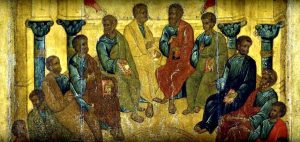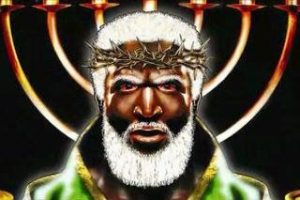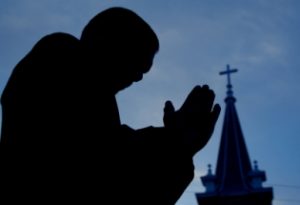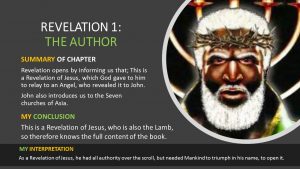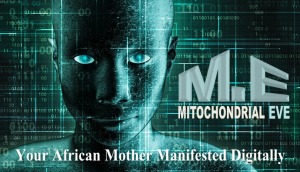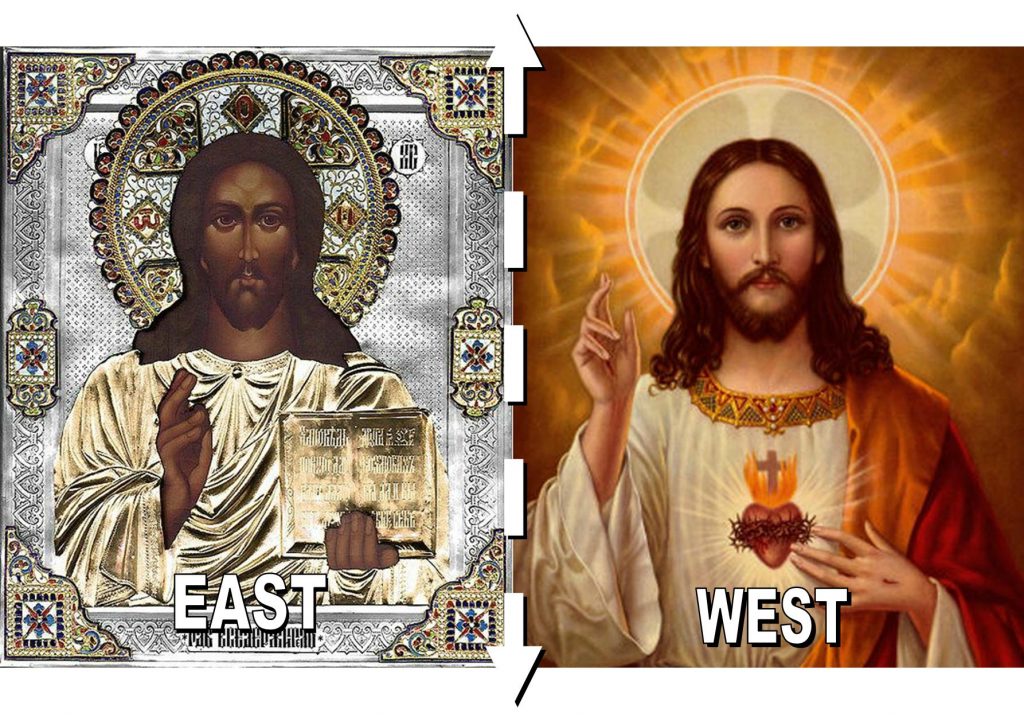
Christianity over the first four centuries
Up until the infamous Nicene Council in 325 AD and over the first three centuries of the Christian tradition, the major Christian people, cities and countries in the world, had developed totally independently and uniquely.
Each with there own unique Christian scholars, language, writings, customs, traditions and interpretation of the Christian faith. This independent growth, had from the beginning, been quite controversial, within the territories and confines of each Christian state, itself. resulting in a whole array of localised, Christian doctrines, traditions and movements.
All of whom were claiming to be the true custodians of the original faith, past down by the Disciples and Apostles, who had traditionally ministered within these respective areas. This led to a series of meetings and gatherings of Christian’s, within these localised areas during the 1st, 2nd and 3rd centuries, of the Christian era. These local gatherings were held to debate and confirm, who was actually keeping with the tradition, handed down by Yahshuah, the Disciples and Apostles, and those who had gone astray.
These internal divides and conflicts, both doctrinal and authoritative, created much controversy in the early development of Christianity, both in the east and the west.
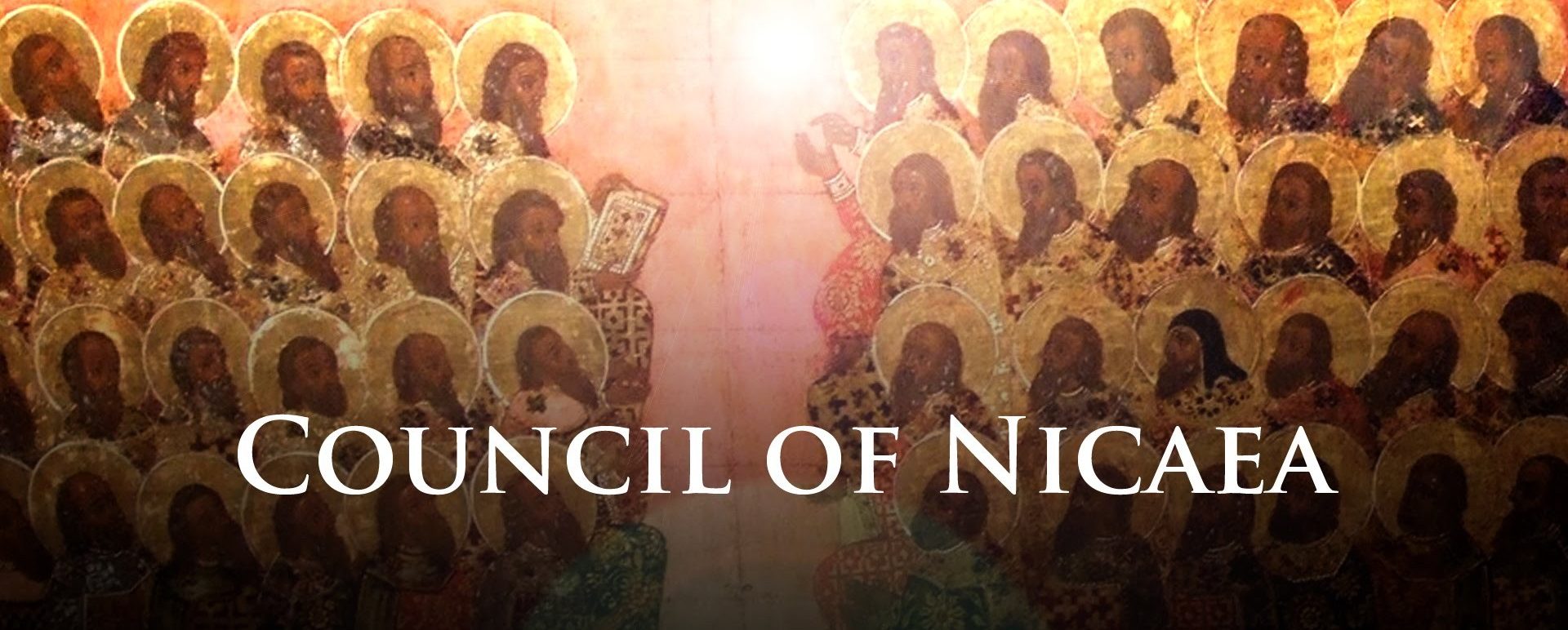
The 1st International Christian Council
These divisions within Christianity, gave rise to the First Great Ecumenical Councils, the Council of Nicaea in 325 AD, which for the first time in history authenticated or standardised the an orthodox faith. This standardised orthodoxy, was established for the 318 bishops from around the Christian world, gathered at Nicaea, who accepted what is today known as the Nicene Creed, of 325 AD. This created for the first time in history, One Universal (Catholic) Apostolic Orthodox Church, which included, Christian’s, in Egypt, Armenia, Syria, Greece, Rome, Ethiopia and other important Christian centres, in the world at the time.
This first major council, which created orthodoxy and One Universal church in 325 AD, was followed by two other major councils, one in Constantinople in 381 AD and other in Ephesus, in 431 AD. Both of these major councils were able to further strengthen and solidified this union of the then One Universal (Catholic) Church, as unanimously all the bishops, from their respective Christian traditions and countries, accepted the findings and creeds that came out of and were established, by these councils. (See The Nature of Christ Debate post)
It should also be firmly understood that although now One Universal Church, the diversity and uniqueness of these independent national Christian traditions, remained intact, even though each tradition, had formerly accepted a universal faith and creed. This is very important to note, as although One Church, with One Faith & One Creed, each practiced there form of Christianity, in their own unique way.
This diverse universal church continued intact, joining both eastern and western Christianity together for the first time from 325 AD, up until the fourth major Ecumenical (International) Christian Council in 451 AD, at Chalcedon.
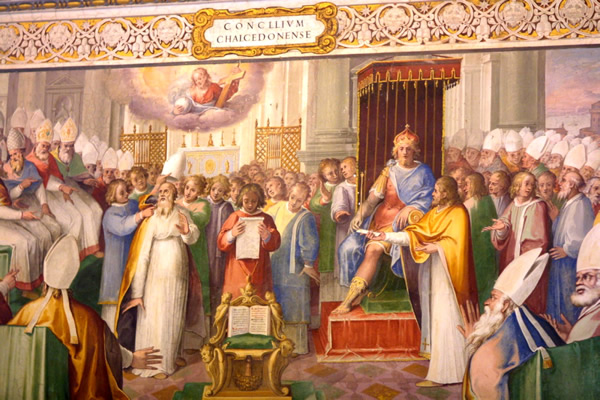
The Controversy of The Fourth Ecumenical Council
The Most Controversial of All Christian Council’s
The Fourth Ecumenical Council that followed Nicaea, held in the Roman province of Bithynia, in 451 AD, in the northwest of Asia Minor, known to history as the Council of Chalcedon that proceeded the Council of Ephesus in 431 AD. Is without question the most infamous and controversial of the seven Ecumenical Councils.
This fourth council although always featured in the main seven Ecumenical Councils, its true outcome, its significance and the controversy it caused, specifically within the then united orthodox Christian world, is curiously seldom highlighted, publicised or celebrated in western Christianity. Although being one of the most documented and historically evidenced and verified of all the seven councils.
Nevertheless this Council and its outcome is mostly unknown to most lay Christians in the West, although it is possibly one of the most important Christian Councils, in the entire history of the United Orthodox Church, until recent times.
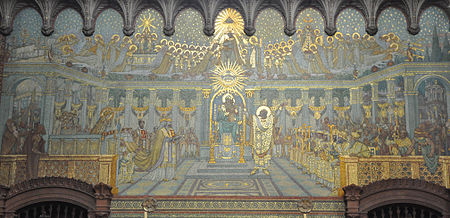
The One Holy Universal Apostolic Church
When Orthodoxy and the Universal Church was ONE
This council at Chalcedon in 451 AD, created the first deep division within the then united Holy Catholic (Universal) Orthodox Apostolic Church, formally established after the Council of Nicaea in 325 AD, only 74 years since.
This original United Church, that had lasted since Nicaea and survived two councils, included as head of each independent branch; The Archbishop of Rome, whose Apostolic See included all Orthodox Bishops of Western Europe; The Archbishop of Alexandria, whose Apostolic See included all Orthodox Bishops of Egypt and all Africa,; The Archbishop of Antioch, whose Apostolic See included all Orthodox Bishops of All Asia, including, Jerusalem, Syria, Armenia, Turkey, India etc., the first and only ever Universal Church.
This once united church, representing all orthodox Christians, in the world at the time from Africa, Europe & Asia, incorporated all the then accepted Orthodox Christians, on earth, into this “One Church”, known simply as the “One Holy Catholic (Universal) Apostolic Orthodox Church”, founded, as the main outcome of the Council of Nicaea, ie. a united church.
It is therefore at this fourth council in Chalcedon, only 74 years later that this Holy Universal United Church that had existed for less than a century, became divided for the first time, and has remained divided and separated, ever since.
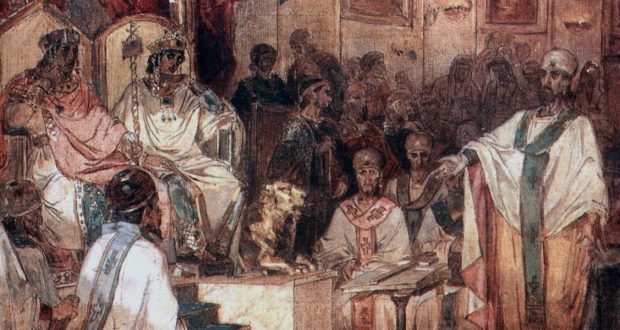
The Importance of the Council of Chalcedon
The East West Christian Divide
The Council of Chalcedon in 451 AD, is undoubted the most important and significant, as well as, the least known council in the history of Christianity, as it is after this specific council that we get the clear direct separation and division between Eastern Christian tradition and Western Christian tradition.
Creating two completely separate although outwardly similar Christian traditions that have both survived totally independently, up until our modern age.
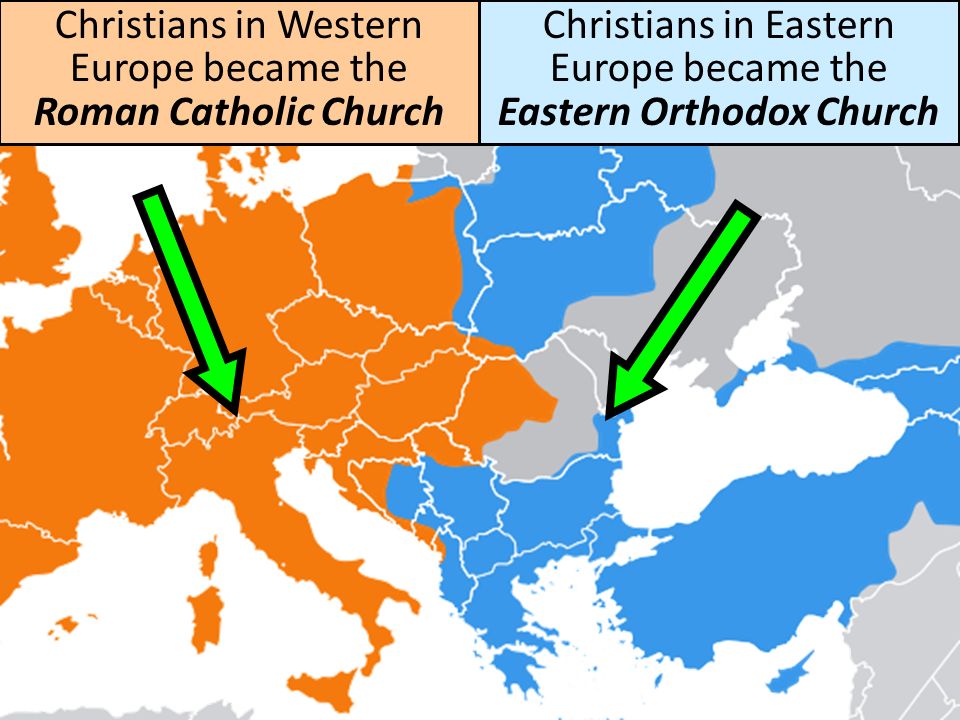
The Great Schism (Deception)
The Western Christian Divide, ie. Roman East & West
This separation and division between Eastern Christianity & Western Christianity in 451 AD, is often overshadowed by and confused with, what is known in history as, The Great Schism or the East – West Schism, which is commonly regarded as the fundamental split between Eastern & Western Christianity.
This is the popular view held by most Christians in the west today, as well as what is propagated throughout western Christianity.
However this Great Schism, is truly a Great Schism, possibly one of the Greatest Schisms, in the history of all Christendom.
But not however due to why this event in history received this title, but because of the effect that this specific event The Great Schism (so called East-West Schism) that took place in 1054 AD, has had upon the true Split between Eastern & Western Christianity that took place in 451 AD.
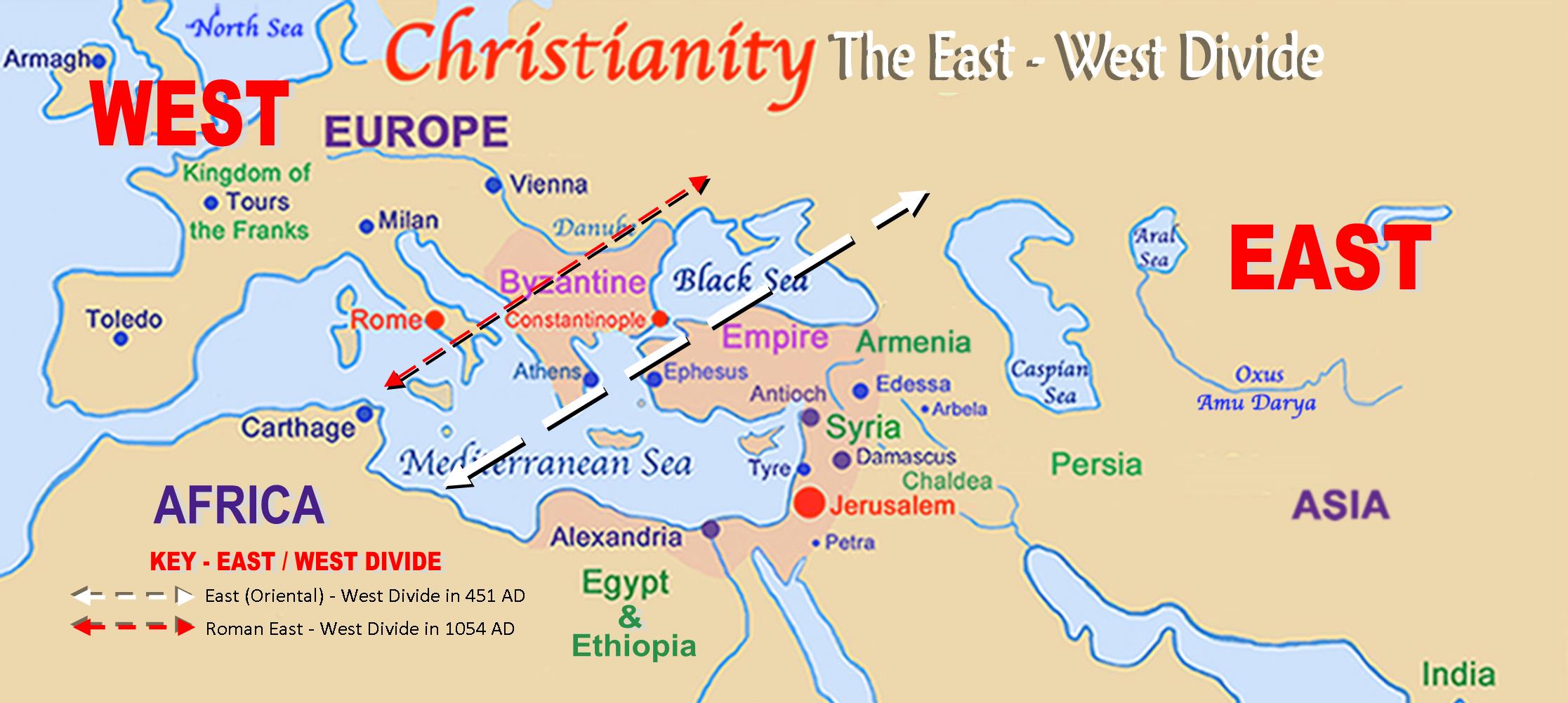
The Great Deception & Schism of 1054 AD
The Falsified Christian East – West Divide
It should be noted here and well understood that the Great Schism of 1054 AD, although a separation of the Eastern Christians from Western Christians, was only actually a separation between Western Roman Catholics in the West, based in Rome and Western Roman Catholics in East, based at Constantinople.
This division of Roman Catholicism (East from West) that took place in 1054 AD, has done somewhat to overshadow the true separation between Christian East & West, 500 years earlier.
We therefore also believe that this overshadowing, has been done deliberately and intentionally, to achieve a specific objective.
This is easily observed and proven, to any enquirer today, just search the www. to find out about the separation between, Eastern & Western Christianity, it is the Great Schism of 1054, and the division between Roman Catholic’s in the West & East that is often presented.. Therefore, overshadowing and even hiding the true East & West divide.
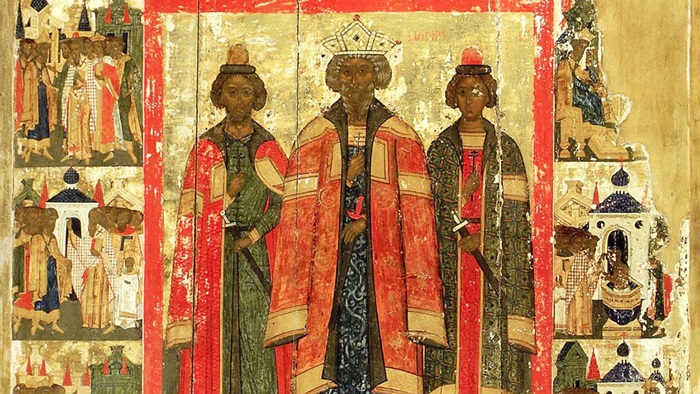
Identifying the Christians of the East
Who are the Eastern Christians
Adding to this confusion and what is even more sinister and misleading, is the fact that ever since this Roman Catholic split, in 1054 AD and into our modern age, we find that the Roman Catholic Christian’s in the East, after separating from the Roman Catholics of the West, began to be known as, as they are still called today, Eastern Orthodox.
Why this is very misleading and to a degree very damaging to the true understanding of this separation and differences between Christianity in the east and west, is because today, when most people divide the Christian world, they divide it into two, East & West. In the East, they place Eastern Orthodox Roman Catholic Christians, and in the West, Western Orthodox Roman Catholics, with Anglicans, together with all protestant Christians in the west that derive from this western Roman Catholic Christian tradition..
Whilst it is true that all Roman Catholics, Anglicans and Protestants are custodians of this unique Western Christian tradition.
This misconception and misunderstanding leaves many to believe that this Roman Catholic Influences Eastern Orthodoxy, represents all the Christian Traditions in the East, which it does not, but only represents the Western Christianity or Roman Catholicism that broke away and became an independent Roman Catholic Tradition in the East. Having nothing to do with the authentic, unique and ancient Christianity of the East, that the Entire Roman Catholic Church, both East & West, meaning in Rome and Byzantium, had broken away from in 451 AD.
Although these Eastern Orthodox Roman Catholic Breakaway Christians, have lived alongside, and in relative peace, with the true authentic Christians of the East, and are often indistinguishable from them, they are nevertheless totally separate and independent from them, as we shall see, therefore are actually also to be classified as, Western Christians, who are in the East.
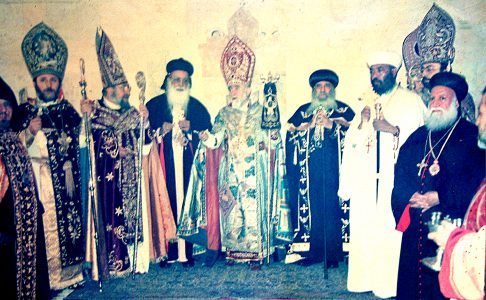
The True Christians of the East (Orient)
The Oriental (Eastern) Orthodox Church
Although seldom understood or acknowledge by modern Christians in the western world, there is in fact a third authentic ancient Christian tradition that exists, who are not part of and are totally independent from both Roman Catholics in the West or there breakaway, sister church, Eastern Orthodoxy.
This authentic third independent Christian tradition that few people in the west are aware of, is known in history and today as the Ancient Oriental Orthodox Apostolic Catholic (Universal) Church.
These Orientals have also always been there, from the very beginning and dawn of Christianity. These Oriental’s actually represent the one and only true Church of the East, from which their name derives, as the Orient, simply means East.
Ironically this Oriental Christian Tradition and Church, although existing independently from the Roman Catholic Church, from the dawn of Christianity, actually never came officially into existence until after 451 AD, as a consequence of the outcome of Council of Chalcedon. Ironically also the name Oriental Christianity, was not official or formally ascribe to them until 1965.
For 1600 years, however these Eastern Christian’s, collectively became known, particularly in the western world as Non-Chalcedon’s, simply because they had collectively rejected the findings and outcomes of the council of Chalcedon, for which they were branded heretics. It should be noted also that this name Non-Chalcedon Christian, popularised by the Roman Catholic Church, was not a name or title that these Eastern Christians, attributed to themselves, in fact they rejected the assumption that this maintained universal Christian body & church, could be define by this single act of rejection, therefore to themselves they remained the One Catholic (Universal) Orthodox Apostolic Church.
Most interestingly and what is of the utmost importance to note, is that these so called Non-Chalcedon, or Eastern Christians, were made up of all of the exact same original orthodox churches, that had come together, as one Church, back in 325 AD, after the Council of Nicaea. The only one absent was Rome. This meant that the only Christians who were not considered Non-Chalcedon’s, were of course the Chalcedon’s, the Romans who accepted this council. Therefore, whilst the stand alone Roman Catholic’s, branded these Non- Chalcedon Christian heretic, likewise this collective of still united Christian’s, branded these Roman’s, as the heretics.
These Non-Chalcedon Churches, which stood firm and united in the first 3 ecumenical councils, at Nicaea, Constantinople and Ephesus, who therefore maintained the integrity on the One Universal Orthodox Apostolic Church, included the Christians from Alexandria & Ethiopia (Africa), Armenia, Antioch, Syria (including Jerusalem) & India.
These Eastern Christians are also the earliest and oldest Christian tradition not only in the East, but in world. All of whom are also original members, of the original Orthodox Universal Church, founded and established in 325 AD, which today that have miraculously against all the odds maintain, throughout the centuries, up to our modern age.
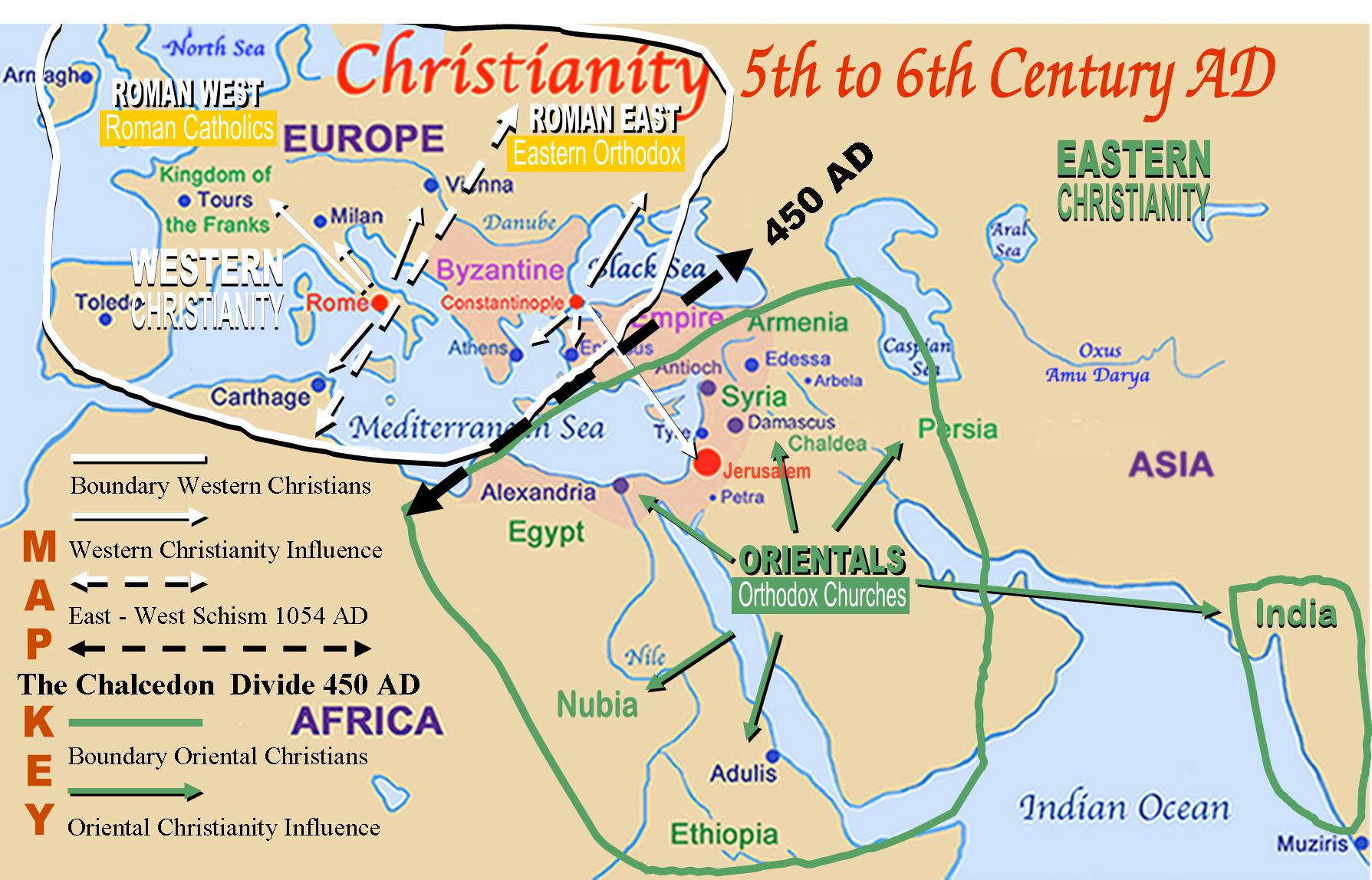
United Oriental East & Divide Roman West
The True Divide between Eastern & Western Christianity
It is therefore with the formation of the Oriental Churches in 451 AD that we get a clear separation and division between the development of Christianity in the East and the West and not as it is believed in 1054 AD with the Great Schism (deception). This division of 451 AD that has separated the Christian East from West, explicitly and fundamentally from this date forward, still exists today.
Culminating in two completely different Christian traditions;
1. The West: Roman Catholic’s and all other European Christian traditions, including the misnomer Eastern Orthodoxy; and
2. The East: The Oriental Christians, representing the Original Christians of the East.
Also of the greatest significance and relevance is the fact that not only has the Oriental Churches, developed totally independently from the Roman Catholic Church, both in the East & West, from then, up until our present age. But more specifically have maintained their unique ancient Christian Traditions, unknown to most Christians in the west, united, together, intact, unmoved and independent from Roman and western Influences, until very recent times.
These Orientals have also miraculously or more precisely by the Divine Will, Guidance and Protection of the Most High Yahovahyah, through His Divine Son Yahshuah, preserved into our modern age, not only their own historic traditions, but most importantly and significantly the Unity of the Original, One Holy Catholic (Universal) Apostolic Orthodox Church, founded in 325 AD at the Council of Nicaea.
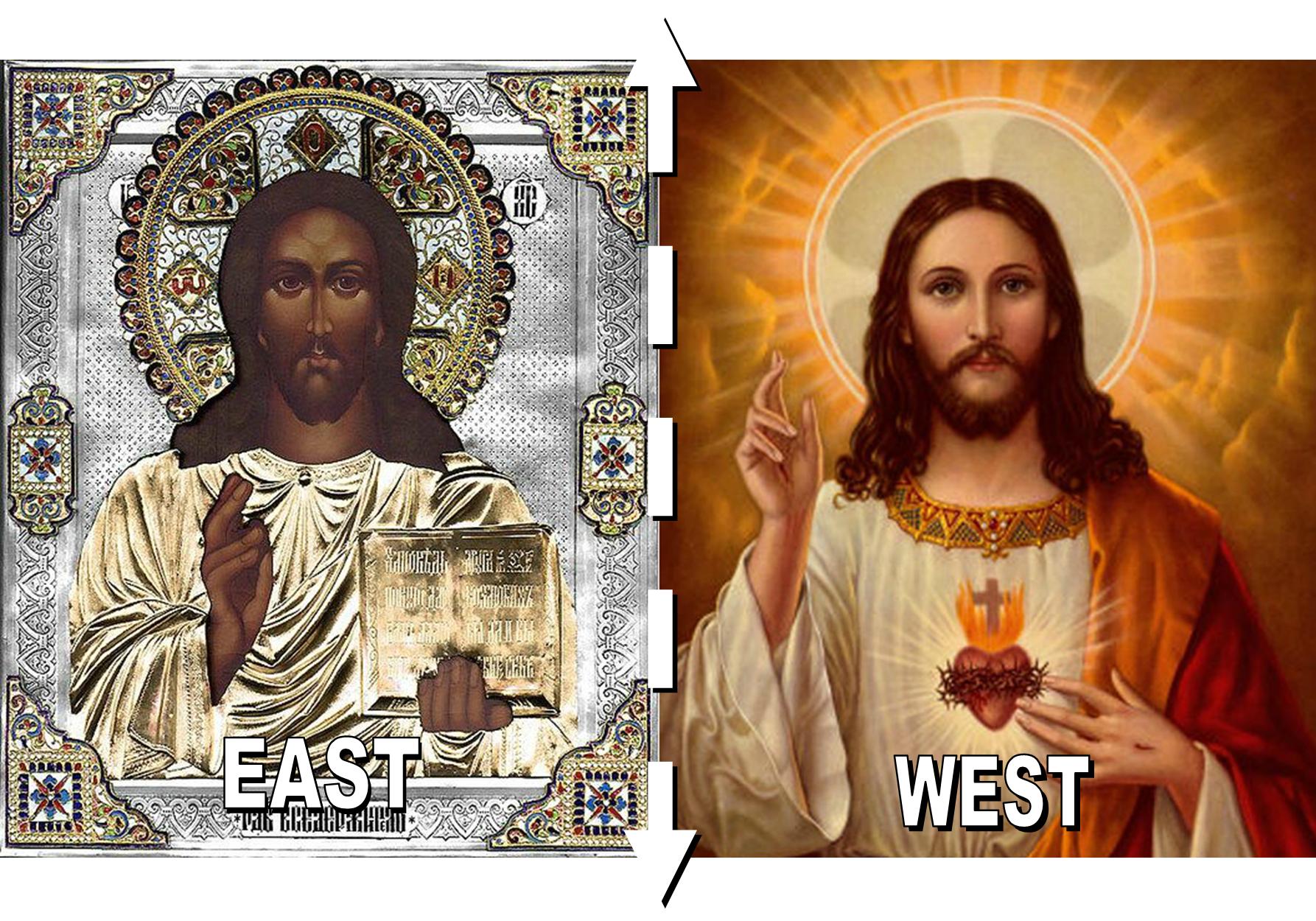
Christianity The East & West Divide
The Oriental East vs the Roman European West
On this basis, we therefore do confirm that there is a unique and independent Western Christian Tradition, as well as a unique and independent Eastern Christian Tradition that are totally, unique, different and separate.
The Eastern Tradition comprising the Oriental Churches, who have maintained the Unity of the One Universal Apostolic Orthodox Church, from its inception in 325 AD and the Western Tradition, who deviated from the Universal Church from 451 AD and have since continued independently, although styling themselves as Universal (Catholic), although they stood and still today, stand alone, literally outside of this still united, Universal Apostolic Orthodox Church, i.e Orientals
In summary the Western Christian Tradition can be classified as Greco-Roman-Anglo-Saxon Christianity, whilst the Oriental (Eastern) Christian Tradition as Jewish-Coptic-Ethiopic-Syriac-Armenian-Indu Christianity.
Based upon these two distinct, separate, unique and independent Christian Traditions, we must therefore ask ourselves which of these Christian traditions do we belong to and/or follow, if any, and how much or how little do we know about each of them.
Regardless of the answers given, it should now be evident and clear to any investigator that there is a Great Christian Divide between Christianity in the East and in the West, as well as fully understanding that Christianity is far from being a European religion, but is a religion and faith of the East that the West deviated from in the very beginning.
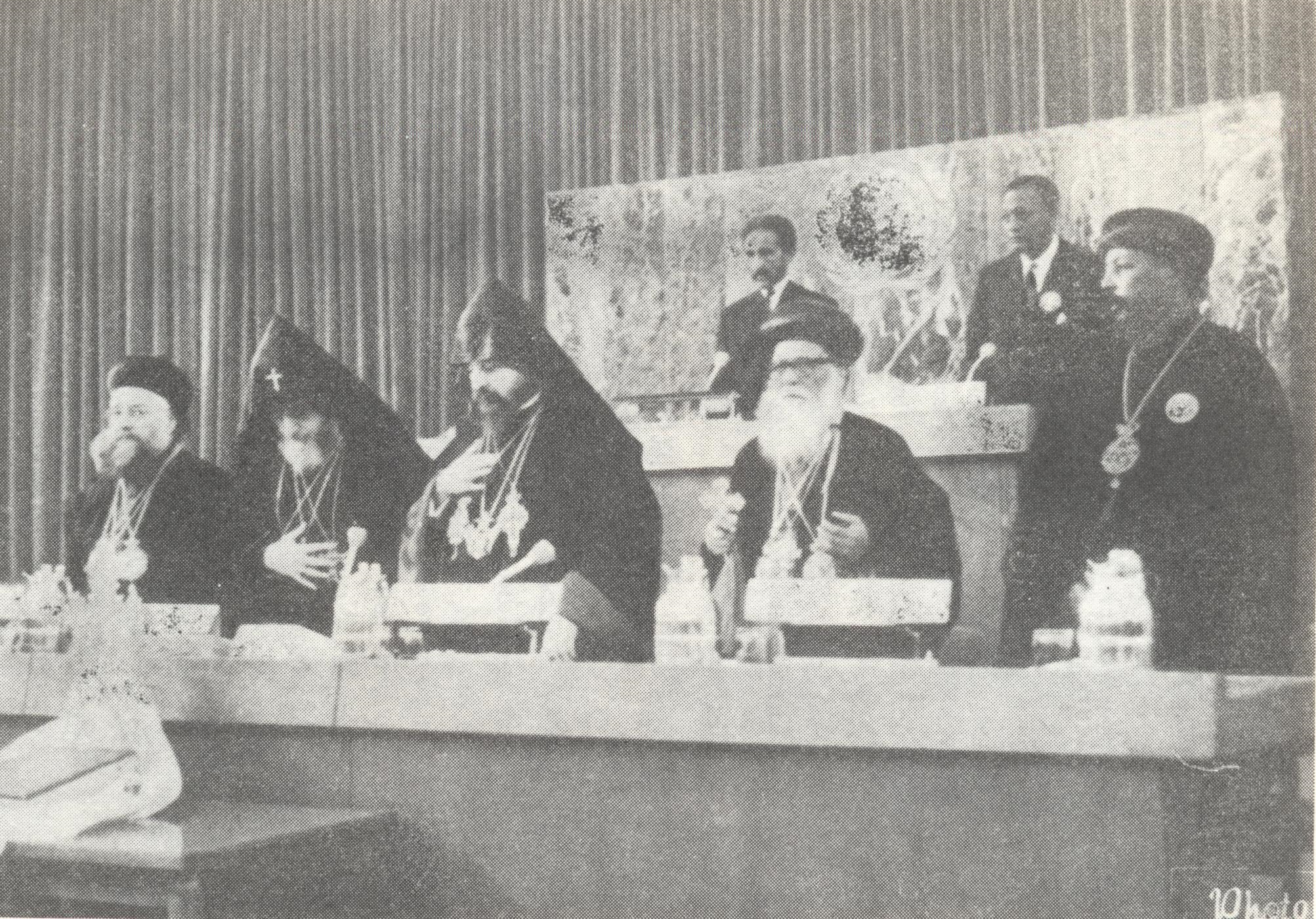
Could this be The End of the Gentile Times?
The Birth of Oriental Church into the modern age
Also of major importance is the fact that this One Universal, Non-Chalcedon collective of ancient Christian Churches, of the east, met for the first time since 451 AD, formally in council, in our modern age, after 1514 years in 1965.
What is more significant than this, and why this 1965 gathering of this Ancient body of churches, has a particular importance in the Temple of Yahshuah, as it should for all African’s and people who follow any of these sister churches, is the fact that this gathering, conference and council, was held in Addis Ababa, the capital of Ethiopia, by none other than His Imperial Majesty Emperor Haile Selassie I, himself.
From this gathering, many significant resolutions and plans were also inaugurated, which has help to steer these most ancient Church traditions in to the modern world, reaffirming the survival, the unity and the renewed mission of this One Universal Ancient Orthodox Apostolic Body of Churches.
Two outcomes in particular should be noted here; The first being that it is at this specific conference in 1965 that the name Oriental Christian’s was formally and authentically attributed to this ancient body of churches; And secondly it is here that Haile Selassie I, for his commitment and devotion to the Orthodox Christian faith, as well as, for convening, hosting and presiding over the historic conference, was given the title, by unanimous decision of all the Patriarchs of these ancient sister churches gathered, as the Defender of the Faith, the Oriental Christian faith, that is.
This conference in its entirety is also reproduced here and made available, to all our visitors, through our 1965 Addis Ababa Conference Portal. Where you can learn more about these churches, the 451 AD Chalcedon division, the resolutions of the conference, together with speeches and images. Please visit this page to find out more. CLICK HERE
